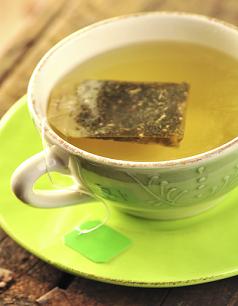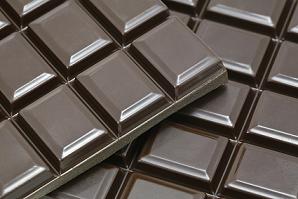Foods that spark our body and mind
PRIOR TO the start of class, especially in the morning or after meals, it is easy to spot students getting a cup of coffee from the vending machine to avoid dozing off in class. Some students grab a chocolate bar, while others prefer green tea as a healthy alternative. Those who are a little more prepared buy Bacchus D from the pharmacy beforehand. Meanwhile, some netizens, determined to stay awake as long as possible, share countless recipes for “potions” that “seem” to have better stimulant effects. How do all of these foods give a spark to our nerves? While certain ingredients help us feel awake temporarily, of course, we should be careful about how much we consume.
Coffee
Many people always start the day with a cup of coffee in the morning, and in the case of students, they drink coffee

A moderate intake of caffeine stimulates the nerves and alleviates fatigue. However, it takes three or four hours for this effect to reach its height; thus you should consider the time when you drink coffee. You do not want to doze off while trying to study in the evening, and then suffer a sleepless night due to your body’s belated response to caffeine.
The recommended daily caffeine intake for an adult is under 400mg, the amount contained in about five to six cups of coffee. If a person drinks too much coffee, he or she could suffer from hypertension, sleeplessness, and an upset stomach. Moreover, the person could be “addicted” to caffeine, which means the body cannot hold itself unless there is as much intake of caffeine as before. There are many research results on the benefits of drinking coffee, like preventing certain kinds of cancer, yet coffee is beneficial only when moderately consumed.

Green tea
Green tea is a good substitute for coffee. Like coffee, green tea also contains caffeine, yet the amount is less. Furthermore, the caffeine in green tea is absorbed less than that in coffee due to components like catechin and theanine. Though the stimulant effect is less than that of drinking coffee, drinking green tea has its advantages. Theanine enhances brain function and heightens concentration. Catechin breaks down fat, slows down aging, and prevents cancer by removing harmful active oxygen. Moreover, a cup of green tea is only 1 calorie, whereas a typical cup of coffee with milk and sugar amounts to 200~300 calories (approximately the same amount of calories in a bowl of rice). However, drinking too much green tea has the same effect as drinking too much coffee, resulting in hypertension and stomach pains.
Chocolate
Chocolate is a customary snack many students favor when they are plowing with their schoolwork and studying for

In order to truly take advantage of chocolate, it is better to eat dark chocolate; it is healthier with less sugar and fat and more cacao than milk or white chocolate. According to the study* by the Nestle Research Center, 40g of dark chocolate everyday relieves stress by reducing levels of stress hormones in the body, also resulting in less fatigue. Yet chocolate, regardless of the type, is in high calories (more than 500 calories per 100g) and fat content. .
*Source: Journal of Proteome Research
Bacchus D and the Boong Boong drink
Besides the typical coffee, tea, and chocolate, there are special artificial drinks that help overcome fatigue. A popular one in Korea is Bacchus D, which is an energy drink whose main ingredient is taurine (2,000mg), known to be especially effective for recovering from physical fatigue. A bottle of Bacchus D also contains 30mg of caffeine in an anhydrous form (containing no water). Bacchus D is not an ordinary commercial drink but a medical product with high stimulant effects, only one bottle a day is recommended.

* * *
Many Yonseians cannot get enough sleep while trying to get through their busy lives, and thus they try every means available to stay awake night and day. Although their hard-working attitude is noteworthy, excessive intake of stimulants may be harmful in the long term. The most obvious but ideal way to recover from fatigue is, of course, is to get enough sleep, eat foods with high nutritional value, and exercise regularly. Intake of other stimulant foods, especially artificial medical products, should be considered as a last resort.
Graph 1. Average Caffeine Content in Commercial Foods
Daily Allowance: less than 400mg
Dark chocolate (Cacao 72%), approximately 16 pieces (30g): 18.12mg
Coke, 1 can (250ml): 24.6mg
Green tea, 1 tea bag (1.5g): 28.28mg
Low fat milk (coffee flavor), 1 pack (200ml): 46.70mg
Green tea, 1 bottle (500ml): 60.62mg
Instant Coffee, 1 stick (2g): 62.14mg
Canned Coffee, 1 can (175ml): 76.36mg
Brewed Coffee, 1 cup (200ml): 87.43mg
*Source: Korean Food & Drug Administration
Box 1.
According to the research on caffeine content in commercial foods by Consumers Korea in 2009, there is a considerable amount of caffeine in green tea ice cream, even in the smallest size cup. Those who deliberately choose to eat green tea ice cream as a “healthier choice” should pay attention to its relatively high caffeine content.
Graph 2. The amount of caffeine per 100g (the smallest size cup) of green tea ice cream
Green Tea (Haagen-Dazs): 99.83mg
Green Tea (Baskin Robbins 31): 72.96mg
Cledor Simply Pure Green Tea (Binggrae): 59.11mg
Green Tea (Natuur): 49.47mg

